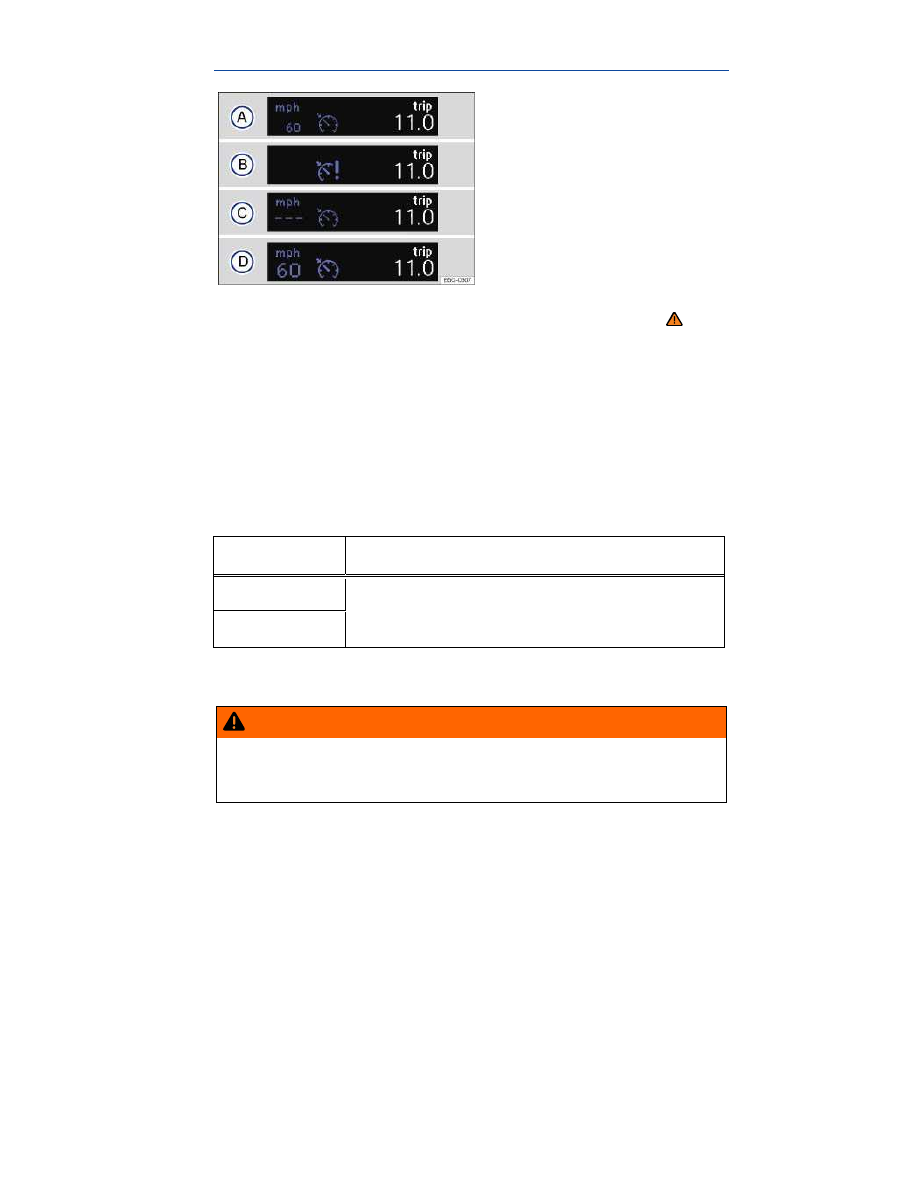Volkswagen e-Golf (2015 year). Manual - part 18

Indicator lights
Fig. 140 In the instrument cluster display: Cruise control status indications.
Please first read and note the introductory information and heed the WARNINGS
Display
Different cruise control versions are available. The stored speed is shown in the instrument cluster
display on some equipment versions.
Status
⇒
fig. 140
(A)
Cruise control temporarily deactivated. Stored speed displayed in a darker shade or in smaller
numbers.
(B)
System malfunction. See an authorized Volkswagen dealer or an authorized Volkswagen
Service Facility.
(C)
Cruise control activated. No speed stored in memory.
(D)
Cruise control is active. Stored speed displayed in white or in larger numbers.
Indicator lights
Lights up
Possible cause
Cruise control is regulating the vehicle speed.
When the ignition is switched on, several warning and indicator lights come on briefly for a function
check. They go out after a few seconds.
WARNING
Failure to heed warning lights and instrument cluster text messages can cause the vehicle to
break down in traffic and result in a collision and serious personal injury.
Never ignore warning lights or text WARNINGS.
Always stop the vehicle as soon as it is safe to do so.